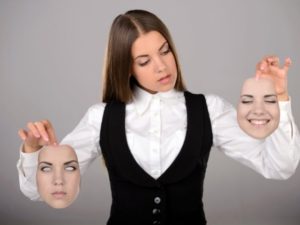
Shifting Negative Thought Patterns
This phrase has helped me gradually shift from a negative outlook on sensory issues, socializing, and myself, to a tendency toward looking for the good.
Reducing anxiety and enhancing calm
at a deep biological level.
The SSP is specially designed music that has been shown to:
Great for adults and kids, Autistic and otherwise.
The Safe and Sound Protocol is a sequence of music that has been computer filtered to enhance certain frequencies and reduce others, delivering messages of calm and safety directly to the nervous system.
Because our auditory pathways are a direct link to our whole body’s nervous system, we can use them re-teach our nervous system to be less reactive when appropriate in a given situation, letting us feel calmer and happier.
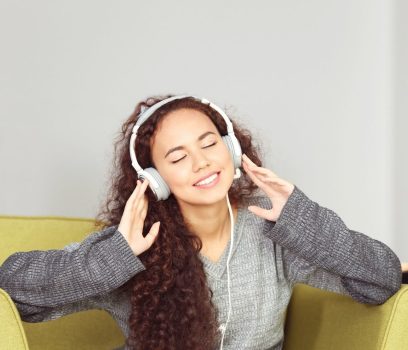

Our ears are a direct link to our Autonomic Nervous System. That’s the most primitive part of our brain; it controls things like heart rate, breathing, and digestion.
It’s also constantly on the lookout for potential threats, and when it detects danger, it mobilizes to protect us by fighting or fleeing, or in extreme cases, by freezing—playing dead.
How wonderful that we have this system built in to protect us automatically when we’re in danger!
When the danger is over, it’s supposed to power down, and let us go back to being happy, thoughtful, creative, learning, people.
When that doesn’t happen, it creates a whole host of potential problems.
You see, when our nervous system mobilizes to fight, flee, or freeze, it makes a whole lot of changes in our bodies.
It shuts down things you don’t need in the moment of danger, like:
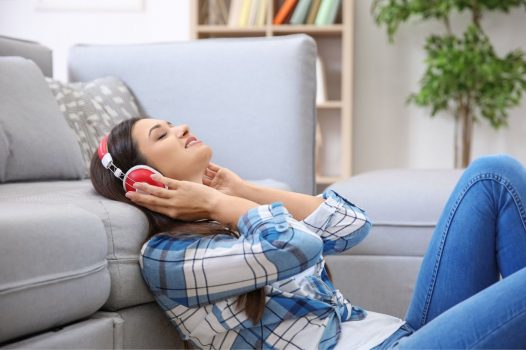

When those systems stay off long-term, they can lead to regular:
And when our defensive system stays powered up long-term, it starts looking for things to react to. It begins to react to things that aren’t dangerous at all as if they were potentially life-threatening.
The SSP trains our nervous system to come down off of high alert, so that everything in life becomes easier.
Problems aren’t as frustrating. Being with other people is more enjoyable. Sound and touch and all the other senses don’t hurt so much. Focus is improved.
Everything just feels better.

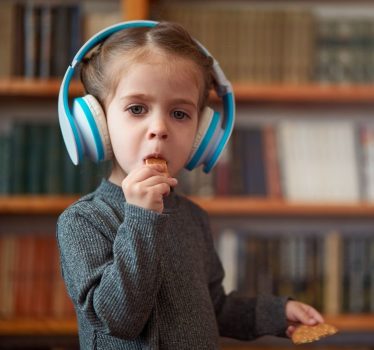
These are the most common areas of improvement that people report after the SSP, though it’s impossible to predict what each individual will get out of it.
Your goal might be to improve social engagement, but your nervous system reacts instead by lowering sound sensitivity and reducing anxiety. I still call that a win. And with anxiety lower and sound sensitivity reduced, social engagement might come more easily.
The basic idea is that the the vagal nerve connects to every organ in our body, our brainstem, our nervous system, and our ears, which is why music (sound) can influence it.
The vagus nerve sends information from our brain then to our body, and then we get feedback from the body back to the brain through the vagus nerve. If those signals aren’t well tuned, or they’re not at the appropriate times, or not giving very much information, or too much, we don’t know what’s going on in our bodies. We don’t know if we’re actually safe or not.
Our psyche tries to fill in the missing information, or correct for the overwhelm of information, through our prior expectations and associations. Hence generalized anxiety, repeating unhelpful behavior patterns even when you don’t really want to, feeling unsafe around people when you know they’re not trying to hurt you. This may not always be what’s best in a particular situation.
As humans, our brains evolved to pay special attention to the sound of the human voice as cues for safety.
But if you’ve had experiences in your life where that was unsafe, or you were around people while you were also in sensory overwhelm, or sick, or other uncomfortable things were going on while people were around, those voices may have become associated with those bad feelings.
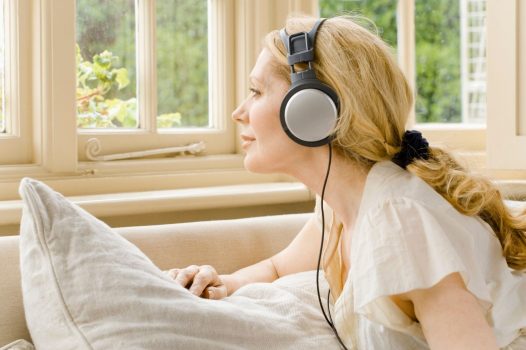
So now when we hear people’s voices, or any sounds in the frequency range that people generally talk at, it may trigger those icky feelings, whether they are responding to what is going on in the moment or not. This can keep us in a nearly constant state of high alert.
For other people, our auditory system doesn’t differentiate any importance between different types of sounds, so your mother calling you doesn’t register as different from the drone of the ceiling fan. So we don’t build up positive associations with people even in safe, supported environments.
The SSP filters music to specifically focus on the particular frequency range of the human voice while sending the brain signals of calm and safety, to re-pattern our brain and nervous system to react differently than we have in the past.
You won’t lose your ability to respond to actual threats. In fact, your ability to respond will improve because your response will these be based on what’s actually going on now, rather than associations from the past.
It’s easy and non-invasive.
Basically, you listen through headphones to regular music that sounds somewhat distorted.
The core of the protocol is five hours of music, broken into ten sessions of 30 minutes each, over the course of two or three weeks (the timing is somewhat flexible).
You are welcome to fidget, draw, fold laundry, or do other quiet activities while listening (though no reading or screens as they can pull your attention away from the music and loose the effects).
If this is for your child, you and your child can play quietly together (speaking is discouraged) with blocks or Legos, or doodle, or play with string, or something like that.
Whether this is for you or for your child, think of it as a self-care opportunity. Plan a time when you can have no interruptions, when you don’t have to multitask, or attend to anyone else. This may involve a bit of preplanning, but it will be well worth it.
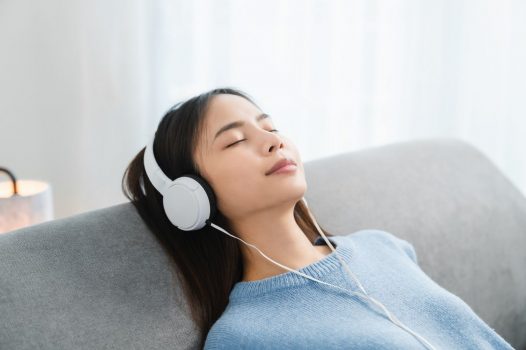
The core of the program is five hours of listening. That’s usually done in 30 minutes per day, two to three times per week. It can be modified somewhat for your unique needs.
Afterwards, you’ll have access to the SSP Balance for three months. It is a sort of booster that will help the changes become permanent.
People often report feeling tired after listening, and sometimes get great sleep those nights.
Less often, people report a little itchiness in the ears, mild irritability, headaches, or sleep interruptions.
These normally go away on their own within a few hours to a couple days.
As you progress through the protocol, we’ll be in touch about what you’re experiencing and noticing, and will adjust the protocol to adapt to your experience.
You might be tired afterward, need a nap, or sleep deeply that night. If at all possible, try to give in to this to let your nervous system process and integrate the workout it’s just gotten.
We’ll keep in touch about how things are going. You can always send me a quick email with questions or updates.
Actually, the SSP usually enhances other therapies.
Because the nervous system is better attuned and can process information better, it can help you become more open to other therapies, including psychotherapy, meditation, bodywork, mindfulness exercises, all sorts of things.
1) If you are taking non-stimulant neurotransmitter altering medications, this may not be effective for you.
In a recent study of 17 children doing the SSP, some while taking medications, some not, they found “a significant reduced response to the SSP in children taking non-stimulant neurotransmitter altering medications, which included both sertraline, a selective serotonin reuptake inhibitor, and guanfacine, an a2A-adrenergic agonist.”
The children taking non-neurotransmitter altering medication such as albuterol showed significant improvement in hypersensitivities.
2) Also, while the SSP can be instrumental as part of recovery from PTSD, recent trauma, unhealed trauma that has had impacted your mental health, or other significant mental health challenges, I am not trained or qualified to provide the specific supports needed for those. Here’s a directory to find a provider who can help you in the ways you need:
You’re welcome to fidget, stimm, move around, or do a calming and familiar activity while you’re listening to the music.
Examples include drawing or doodling, doing a puzzle, crocheting or knitting, building Legos. Pick something you don’t have to think about much, and that you personally find relaxing.
Activities to avoid are reading, anything on your phone or computer, talking, work of any kind, or anything noisy. Basically, anything with language or sound input, as that can interfere with the language of the songs, and any screens, as that will pull your attention from the music so you won’t get as much benefit.
Think of this as a self-care opportunity. Arrange a time when you can have no interruptions, and you don’t have to multitask or attend to anyone else. This may involve a bit of preplanning, but it will be well worth it.
Yes, the SSP has been helping people for over 20 years, and there have been excellent results in several clinical trials with Autistic children and adults, chronic pain, auditory hypersensitivities, sleep disturbances, ADD, PTSD, and more.
2023 Study: Adults with autism show improved social awareness and other benefits following the Safe and Sound Protocol (SSP):
https://www.mdpi.com/1660-4601/20/6/4862
Read several case studies here:
The only other (potential) costs are:
You will need a pair of OVER-THE-EAR headphones. If you don’t already have one, you can buy any decent pair of NON-noise-canceling headphones that go all the way around the ear. Here are two I recommend:
https://amzn.to/3uhw45m
https://amzn.to/3aWkQf5
If you would like to continue the SSP Balance beyond the 3 months that are included, to continue the stress reducing effects, that subscription is $20/mo.
The music is delivered via an app on your phone or tablet.
This is a high definition music file and will take around 1GB of space on your device. After the initial download, you can listen with or without an internet connection.
The live intro and check-in sessions with Heather are via Zoom, so it doesn’t matter where in the world you are.
You will have a choice of three playlists.
The playlist “for adults” is an admittedly odd mix of pop, classic rock, folk, musicals, jazz—something for everyone.
The playlist “for children” is a lot of Disney and other kids songs.
A new classical music playlist is now available.
If you’re at all concerned about what songs might come up, I can give you a copy of the playlist in advance. You can even listen to an unfiltered version of the whole thing before starting the core program. It has no therapeutic effect, but it can be reassuring to get familiar with it. Or the classical playlist might be the way to go.
You’re welcome to pick whichever of the three playlists you like best.
Yes.
Often people are so thrilled by how they feel, or the progress their child is making with the SSP, that they want to do it again.
This is definitely possible, but it shouldn’t be rushed. The nervous system and brain need around three months to integrate all of the changes, so they become permanent. After a minimum of three months, we can talk about doing it again.
I do offer discounted rates for those doing it with me again.
I’ve spent years working on my sensory issues, finding sensory integration therapies that help, and I’ve had some pretty good results with those, but I knew there was a long way to go.
I had seen the SSP mentioned on autism forums for a few years, and everyone spoke positively about it, but it took a while before I finally tried it myself.
I loved it so much that I went through the training to become a provider so I could offer this to all of my clients (and friends and family).
Since I did the SSP, I’ve felt less reactive. Less on edge all the time.
My insides don’t cringe with every single car that drives by my house. I knew that I cringed when the big trucks drove by, but until that feeling released, I hadn’t even noticed how much tension I had been holding for every. single. car. that rolled by.
And I’ve stopped walking into walls. Now I’ll actually go through the doorway, instead of hitting the edge of it, which I did, oh, about one out of every three times.
I’m also noticing body language more, and facial expressions, and I don’t have to rely as much on conscious analysis or guesswork to tell me what other people are feeling, because I’m actually picking up on it.
And I can go to the grocery store now without needing days to recover (just hours).
Which, you know, is awesome. Not overreacting to everything frees up so much energy for things that I actually want to do. And, oh, how I have wanted to do so much that I didn’t feel capable of before.
My mom did the SSP as well, and she experienced a huge reduction in her overall anxiety levels.
Plus, her hearing improved slightly (she is hard of hearing), which I’m guessing is not biological changes, but her ears working together better so her brain is interpreting sounds more clearly. She’s also noticed that she doesn’t walk into furniture as much or get as lightheaded when she stands up.
But for her, the biggest difference is that her long-term depression is lifting and she feels optimistic for the future and has been making positive changes in her life. She is trying new things again, and making plans for the future, which she hasn’t for a long time.
Before you decide, we can meet over Zoom so you can ask any questions you have about the SSP, and see if you feel comfortable with me.
One free session is my gift to you.
Pick your payment option.
If you’re interested in SSP for multiple members of a household, ask me about family pricing.
After you place your order, you’ll get an email receipt with a link to schedule your introductory session. That’s when we’ll get you set up with the music, go over details of how to proceed, and answer any lingering questions.

This phrase has helped me gradually shift from a negative outlook on sensory issues, socializing, and myself, to a tendency toward looking for the good.
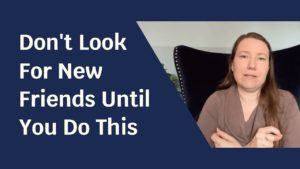
It’s common to start with trying to find people and then work on how to build relationships, but I like to reverse that process.
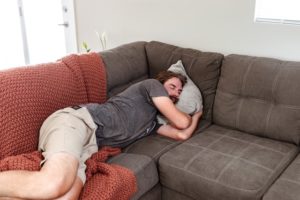
Here are a few prompts to reflect on what messages you were taught about rest, and how you would like to engage with it in the future.
We don’t spam or sell. Promise. Unsubscribe at any time.
Read our privacy policy here.
The information on this site is not intended or implied to be a substitute for psychotherapy, medical advice, diagnosis, or treatment.
© 2020-2024 Autism Chrysalis LLC.